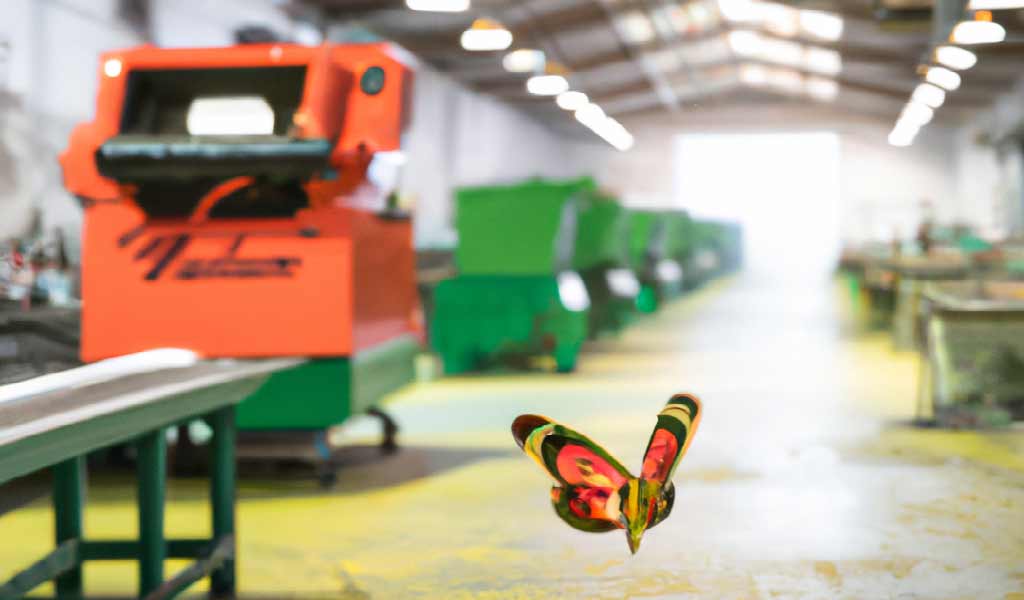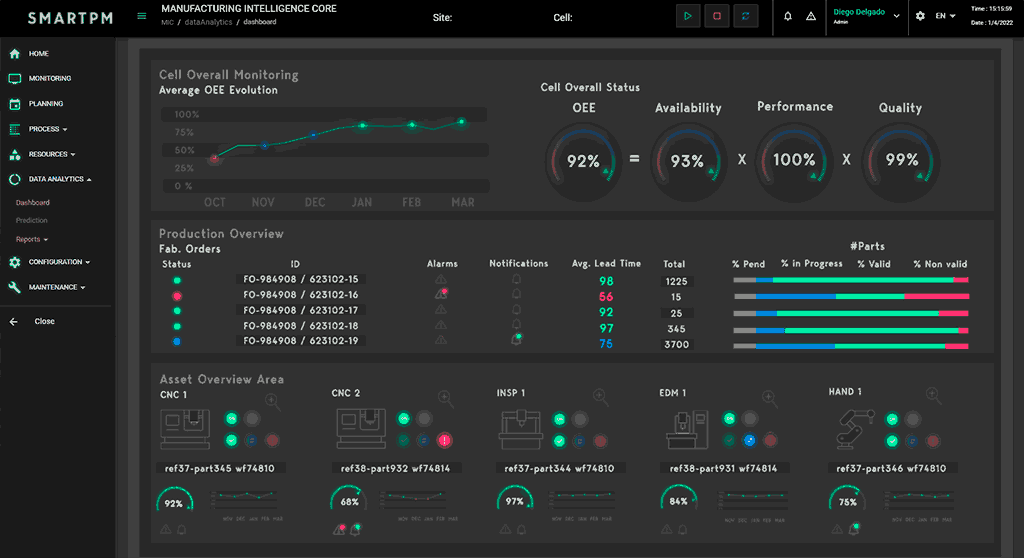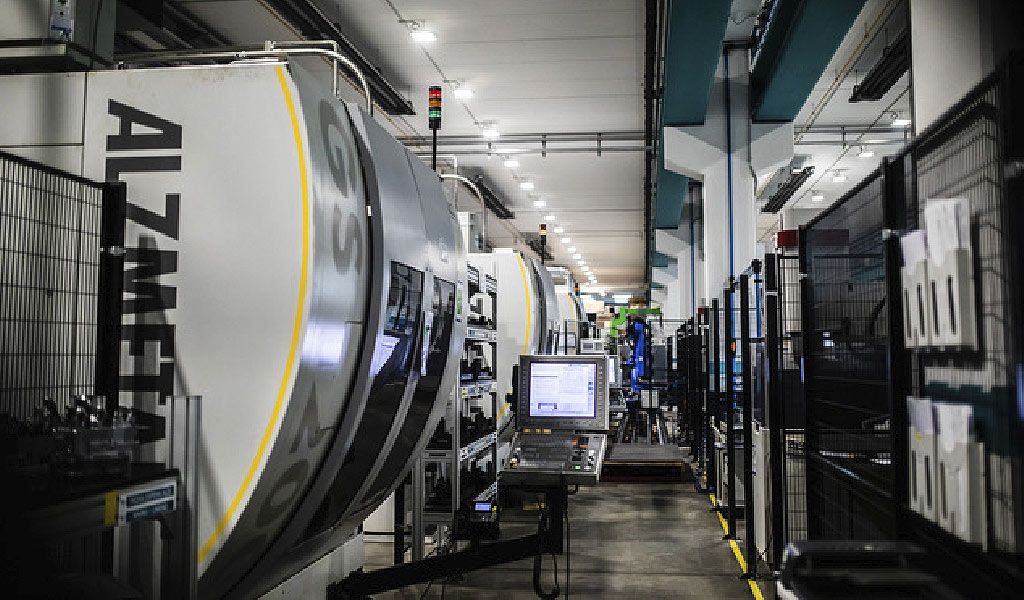According to the butterfly effect, any small change impacting the initial conditions of a system may lead to huge differences in outcomes. You may not have a butterfly fluttering in your workshop, but chaos can be unleashed in a thousand and one ways: lack of efficiency, lack of visibility on processes, lack of robustness, etc.

In the long run this results in higher production costs, reduced competitiveness and a higher environmental impact due to inefficient use of resources and energy. If you are facing this situation, in this article we take a look at 6 strategies you can follow to reduce chaos in your workshop and improve your competitiveness.
1st Strategy: Cut non-value adding operations
This is the core idea of Lean Manufacturing: eliminating waste from the manufacturing process. This can be done using traditional techniques such as 5S, Poka Yoke, etc.
For example, through the 5S methodology, unnecessary operations, which contribute nothing to the manufacturing process but can create chaos, can be eliminated. We are talking about eliminating mess, dirt, unnecessary movements or checks, lack of standards, etc. Poka Yoke is another method that allows us to detect and prevent mistakes in manufacturing tasks, which are the main cause of productivity problems.
Processes should be designed to achieve the finished product applying the minimum time and effort required to do so, and therefore all such unnecessary processes should be detected and eliminated as much as possible
2nd Strategy: Analyse and improve the robustness of your production processes
Robust processes provide production stability that facilitates planning (in terms of time and resources), thus favouring the application of guidelines and tools aimed at keeping the workshop tidy.
Lack of robustness is therefore a source of chaos on the workshop, and chaos leads to reduced productivity and therefore problems in production planning (which in turn feeds chaos). A vicious circle that generates problems such as excessive unproductive idle times, overproduction, poor stock management, excessive defects, etc.
Overproduction can be understood in different ways, such as the production of more quantity than is needed, designing processes with more capacity than necessary, etc. Basically, it causes wasted materials, time and other resources that affect the overall workshop.
Organising and efficiently managing production processes lays the foundation for further improvements such as automation.
Poor planning in job sequencing or process design can also lead to idle times for machines or operators, while others may reach their capacity limit.
To avoid this, a detailed analysis of the work processes is recommended to identify areas for improvement. Standardising operations and tools makes processes more robust and simplifies production tasks such as tool changes.
This improvement process is basic, as once it is implemented it will offer a significant improvement in workshop management; but not only that, organising and efficiently managing production processes lays the foundation for further improvements such as automation, to take full advantage of the benefits it offers.
3rd Strategy: Improve your process visibility

Information management should be tailored to the needs of the workshop. There is no point in collecting large amount of data without a strategy. Too much useless data only hinders access to the truly valuable information, which can lead to quality and productivity problems.
There is no point in collecting large amount of data without a strategy.
It is preferable to have a good system that takes a range of relevant data and processes it in a way that improves production and identifies inefficiencies and inconsistencies that create chaos on the workshop.
This is often caused by having a limited or no visibility at all, in the worst-case scenario, of the workshop workflows and assets. It is important to be able to monitor and control key performance indicators of work processes. If you can do that, view what is happening, you will have the ability to improve production, prevent errors and increase your productivity.
4th Strategy: Automate processes but first make sure they are efficient

Improving visibility on industrial processes and collecting information in an appropriate way provides data that allows you to improve them even further. You will be able to detect tasks that can be automated to increase productivity and reduce lead times. Always bearing in mind that processes need to be refined before automating, so as not to automate processes that are inefficient.
Automation makes it easier for you to increase your production capacity and quality. You will be able to increase working hours while reducing human errors, resulting in manufacturing processes with greater repeatability and therefore less uncertainty and chaos.
Processes need to be refined before automating, so as not to automate processes that are inefficient.
Automation also allows you to reduce workload for employees who can perform other, more innovation-oriented tasks, rather than waste their time in repetitive, low-value tasks. This way you will maintain production and reinforce your continuous improvement capacity without the need to expand your workforce.
5th Strategy: Getting the most out of your IT-OT environment
Integrating IT and OT can be easy if you have a small workshop. But ideally, you should have a robust IT solution that allows you to scale your production and integrate new processes, products and machines without affecting ongoing production.
Having a complex system where different IT solutions coexist can cause problems and inefficiencies when new processes, products or assets are added. It is preferable to have a system that is able to centralise all these inputs to improve your operational capacity.
6th Strategy: Committing to developing a strong culture in your organisation
There is a quote attributed to P. Drucker that says, «culture eats strategy for breakfast». In other words, it is necessary to make changes in the company culture at every level to encourage change and development implementation.
Speaking of quotations, we could mention paraphrase Homer Simpson who and saidy: «people are both the cause of and solution to all of life’s problems.» Having a strategy, means and tools may be of no use if they are not properly implemented with changes in the organisation culture.
People are key players in these processes, but two different roles can be played depending on how the change is managed: people can play a leading role in the fight against chaos, or ally with chaos and be the biggest barrier to overcome.
We help you maximise the capacity of your manufacturing processes.
SMARTPM can help you with the optimisation and smart automation of your industrial processes. Our MIC automation platform for the machining industry helps you to have a global insight and management of your manufacturing processes in real time.
If you want to know more about our MIC platform or the engineering services we offer, please do not hesitate to contact us.
The header photo is generated by OpenAI’s artificial intelligence.
